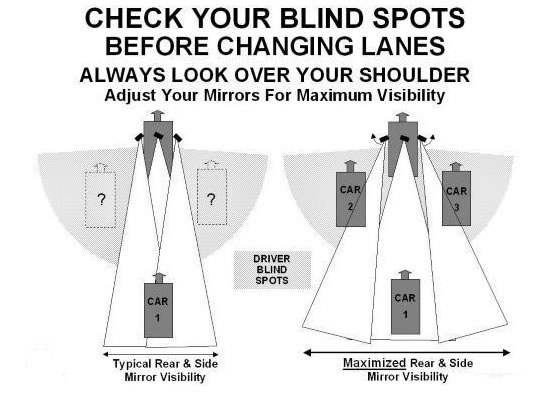Seeing Where You Have Been Is Important
May 17, 2008 – 5:55 amWhen I was growing up, I ran around with a group of gear heads that lived and breathed cars. We were usually driving “beater” cars that we pieced together for about $100 so sometimes we did not have all of the pieces. Among the pieces that were frequently missing or broken were the rear and side mirrors. One of my buddies was fond of saying that he didn’t care to see where he had already been – he was only interested in where he was going. Well my attitude has changed over the years. Although I still prefer to drive an older vehicle, I now make sure that it has all the critical parts attached, including the mirrors.
Mirrors are an important safety component for any vehicle but they are critical for emergency vehicles. When the operator of an emergency vehicle sits in the driver’s seat for the first time, one of his first safety precautions should be to check and adjust the mirrors and find your blind spots. Blind spots are those areas on both sides of your vehicle where you cannot see. For most vehicles, people or cyclists may not be visible when they are in these spots but on some vehicles the blind spots are so large that a vehicle could be there and you would not see it. You can find the blind spots on your vehicle by having someone walk around your car and watching the person in the mirrors.
Before you drive the vehicle, adjust your mirrors so that the blind spots are minimized. Blind spots in most vehicles are to the back left and back right of the vehicle. Start by positioning the interior mirror so that the center of the mirror shows the center of the rear window so you can see directly behind the vehicle. Position the left outside mirror by leaning towards the window and moving the mirror so that you can just see the rear of your car. Position the right outside mirror by leaning to the center of the vehicle and moving the mirror so that you can again just see the rear of your car. Avoid overlap in what you can see in your mirrors. Because your side mirrors show only narrow angles of view, turning your head to do shoulder checks is the only way to make sure there is nothing in your blind spots.
Adjusting the mirrors only takes a moment so make sure you are ready to drive before you put your vehicle in drive.


4 Responses to “Seeing Where You Have Been Is Important”
All good tips, sir. As an instructor, I see a large number of drivers with mirrors adjusted to see either their back tires or the side of their own cars (for backing, I assume). Where, in the history of vehicular transportation was anyone ever hit by the side of their own car?
By R.Scott on May 18, 2008
Good article and graphics. I always forget to adjust the mirrors in my wife’s car until I really need them. Fortunately it has never been too little too late.
By larry smithson on Nov 12, 2016
I find that the mirrors are the first things I look at when I get in a car. Being a bit vertically challenged makes it interesting with each different vehicle I drive.
By Bethany Bidgood on Mar 19, 2018
I always check the mirrors in my assigned car and POV every time I get in, just in case I’ve bumped something, or I’m sitting differently.
By Frederic Wiggins on May 7, 2018